Plants have developed a fascinating array of defense mechanisms to survive in their environments. From physical barriers like thorns and hairs to chemical compounds that deter or harm predators, these adaptations help protect them from herbivores and environmental threats. Some even rely on mutualistic relationships with animals or use mimicry to fool their enemies. Each species has its own unique way of ensuring its survival, showcasing the incredible resilience and diversity of the plant kingdom. This article explores plants that have developed remarkable defenses to thrive in the face of constant challenges.
Passionflower (Passiflora spp.)

The passionflower has developed a remarkable mimicry defense mechanism to ward off certain butterfly species. It produces small yellow spots on its leaves that resemble butterfly eggs, fooling other butterflies into thinking the plant has already been claimed. This deters them from laying additional eggs, which would hatch into leaf-damaging caterpillars. If eggs are laid, the plant’s leaves contain cyanide-based compounds that are lethal to the larvae. Some species of passionflower even mimic other plants with unattractive shapes to herbivores. Beyond this, certain types produce a sticky secretion that traps insects, further safeguarding the plant. Additionally, its ability to attract helpful insects while warding off harmful ones adds to its defensive toolkit.
Shameplant (Mimosa pudica)
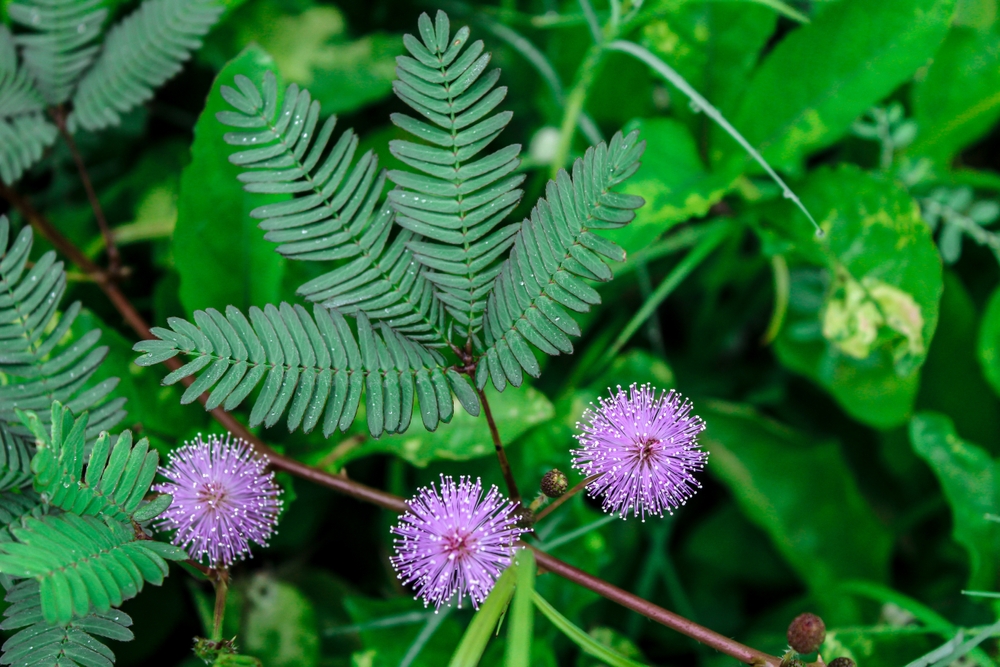
The shameplant, or sensitive plant, has a highly sensitive response to physical touch, which serves as a defense against herbivores. When touched, its leaves fold inward, making it appear smaller and less appetizing. This rapid movement is caused by changes in water pressure within the plant’s cells. Additionally, this behavior exposes sharp spines on its stems, further discouraging potential predators from feeding on it. Native to Central and South America, Mimosa pudica’s leaf-closing mechanism occurs within seconds and is one of the fastest movements seen in the plant world. While its primary defense is mechanical, it also contains alkaloids that deter herbivores from continued munching. This dual layer of protection allows the plant to thrive in its native habitats. Moreover, it is highly sensitive to vibrations, folding up even when it detects rain or wind, preventing physical damage.
Bullhorn Acacia (Vachellia cornigera)
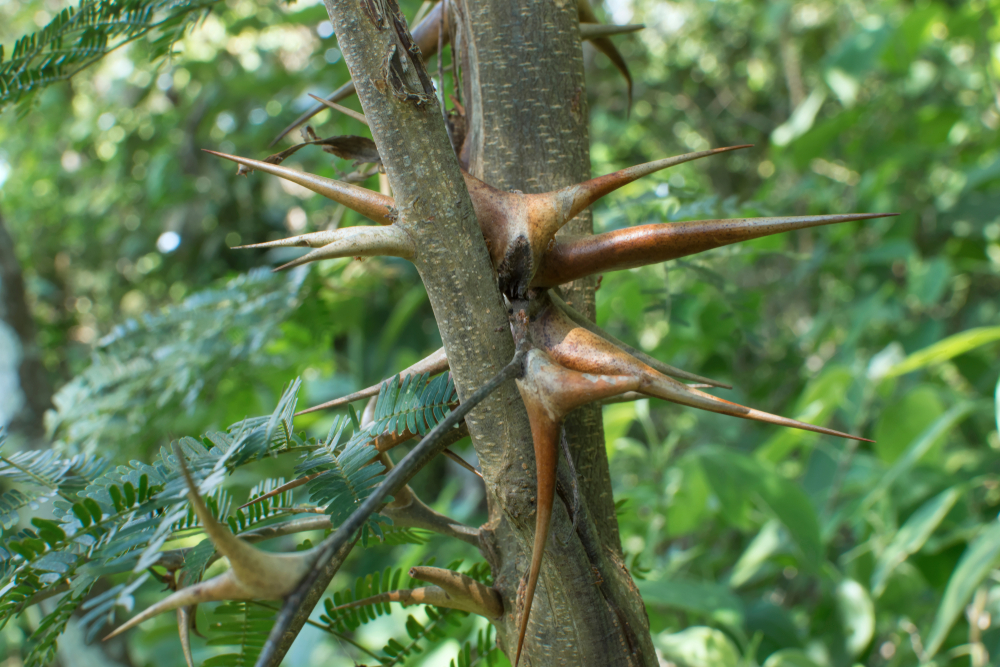
The bullhorn acacia tree has formed a mutualistic relationship with a species of ants, which act as its personal bodyguards. Its thorns are hollow and provide a safe living space for the ants, while it also produces nectar to feed them. In return, the ants aggressively defend the tree from herbivores by swarming and stinging anything that threatens to eat its leaves. This partnership ensures that it is protected from large herbivores, while the ants receive shelter and food. Additionally, the mere presence of these insects has been shown to reduce bacterial infections on the tree’s leaves. This unique defense allows the bullhorn acacia to thrive in regions where other plants might be heavily grazed upon. The symbiotic relationship exemplifies how plants can outsource their defense to other organisms.
Borage (Borago officinalis)
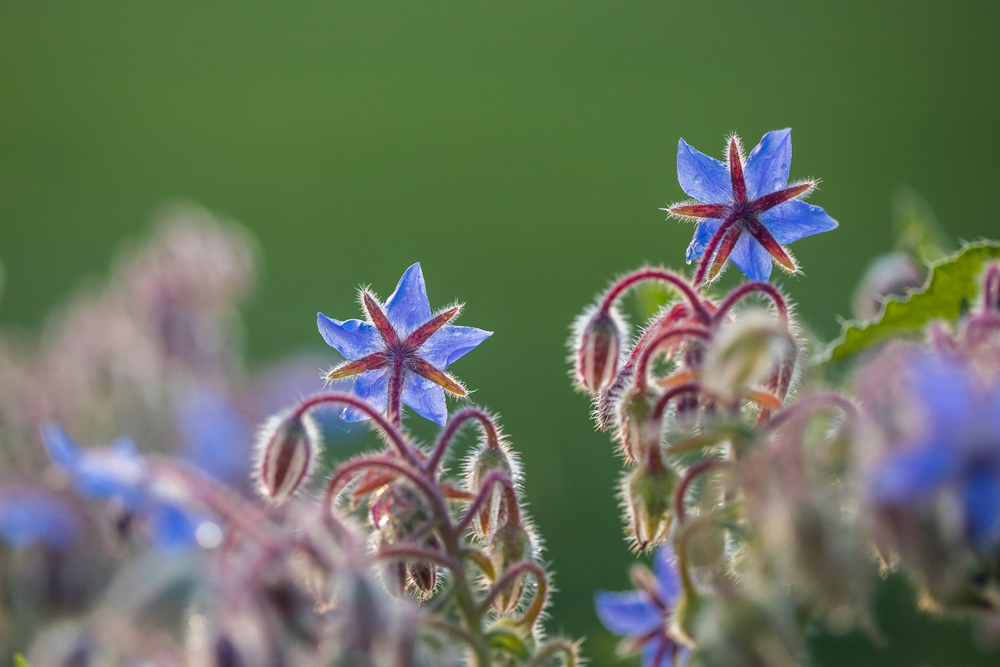
Borage, a beautiful plant with striking blue flowers, protects itself through its coarse, hairy leaves that can cause skin irritation. The tiny hairs on the leaves and stems contain compounds that irritate the skin of animals and humans, leading to a condition called phytodermatitis. While it is often foraged for its cucumber-like flavor, touching it without protection can result in contact dermatitis. Its hairy texture also makes it difficult for insects to navigate its surface, deterring them from feeding on its leaves. Despite this, it has many culinary and medicinal uses, though handling it requires care. Its defense mechanism serves as a natural deterrent against herbivores, keeping the plant safe from potential damage. Furthermore, these hairs help reduce water loss, making the borage more resilient to dry conditions.
Dumb Cane (Dieffenbachia seguine)
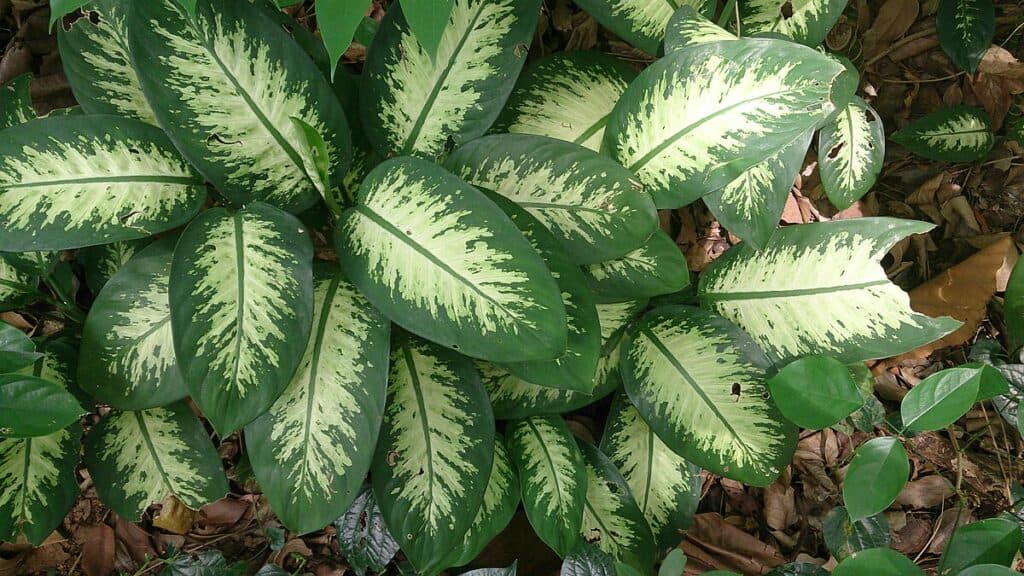
The dumb cane plant is infamous for its chemical defense mechanism that can cause intense irritation or even paralysis in animals and humans. When its leaves are chewed, the plant releases calcium oxalate crystals, which puncture the mouth’s tissues and cause a burning sensation. In severe cases, it can lead to swelling of the throat, making it difficult to speak, hence the plant’s name. This chemical defense protects the plant from being eaten by herbivores and curious animals. The sharp crystals are housed in specialized cells called idioblasts, which burst open when the plant is damaged, releasing the irritants. This immediate and painful response deters further feeding. Its toxicity is so effective that it has been used historically as a form of punishment in some cultures.
Stinging Nettle (Urtica dioica)
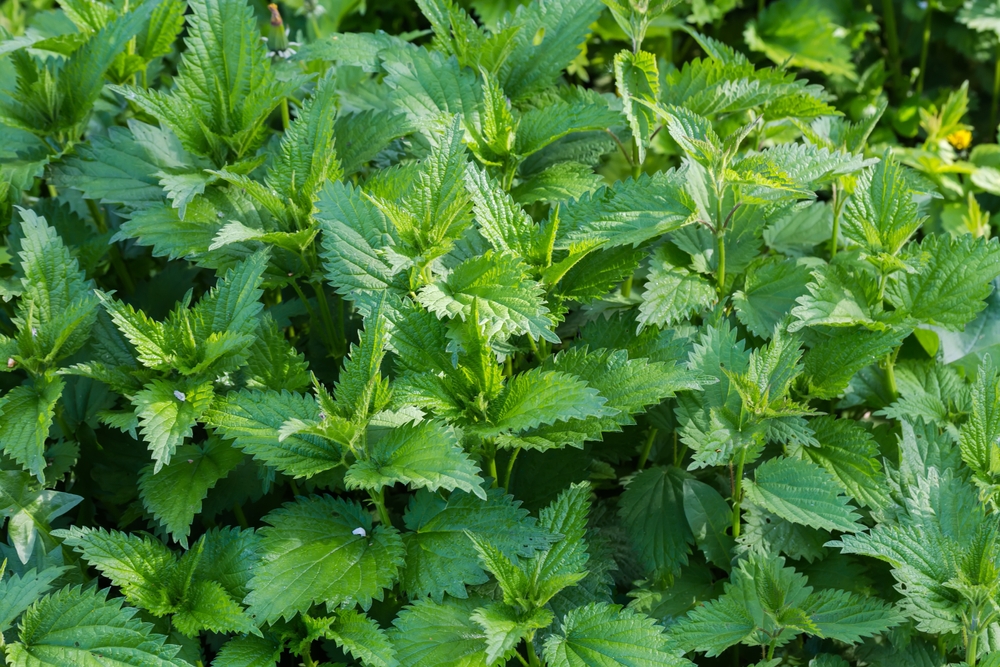
Stinging nettle defends itself with tiny hairs on its leaves and stems that inject irritants into anything that brushes against them. These hairs, called trichomes, act like miniature needles, delivering a mixture of chemicals, including histamine and formic acid, which cause a burning, stinging sensation. The reaction is immediate, deterring herbivores and humans from further contact. Additionally, its sharp, stinging hairs serve to protect it from being grazed by large herbivores. Interestingly, despite its painful defense, stinging nettle has been used for centuries in herbal medicine and cooking once the stingers are neutralized through heat or drying. Its dual nature as both harmful and beneficial highlights the complexity of its survival strategy.
Poison Ivy (Toxicodendron radicans)
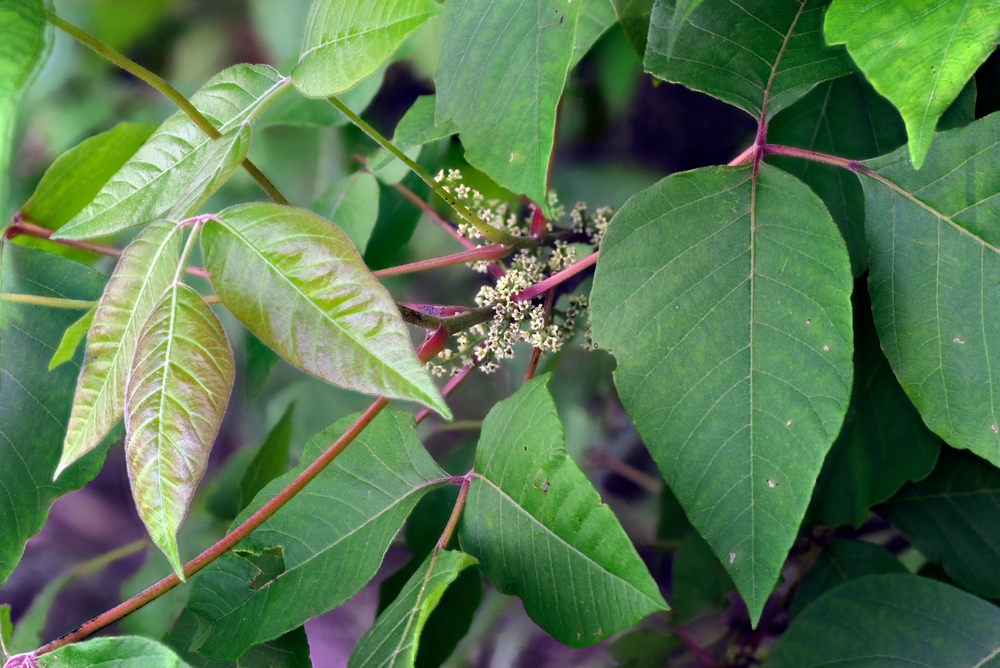
Poison ivy is notorious for its ability to cause severe skin irritation through the release of an oily resin called urushiol. This compound binds to the skin upon contact, causing an allergic reaction in most people, which results in redness, swelling, and itching. The resin is so potent that it can remain active on surfaces for long periods, and even indirect contact can trigger a reaction. Its defense mechanism ensures that animals and humans avoid touching or eating the plant. In the wild, it thrives in a wide range of environments, from forests to urban areas, thanks to this powerful deterrent. Interestingly, urushiol does not affect all animals, with some, like deer, able to consume the plant without harm.
White Dead Nettle (Lamium album)
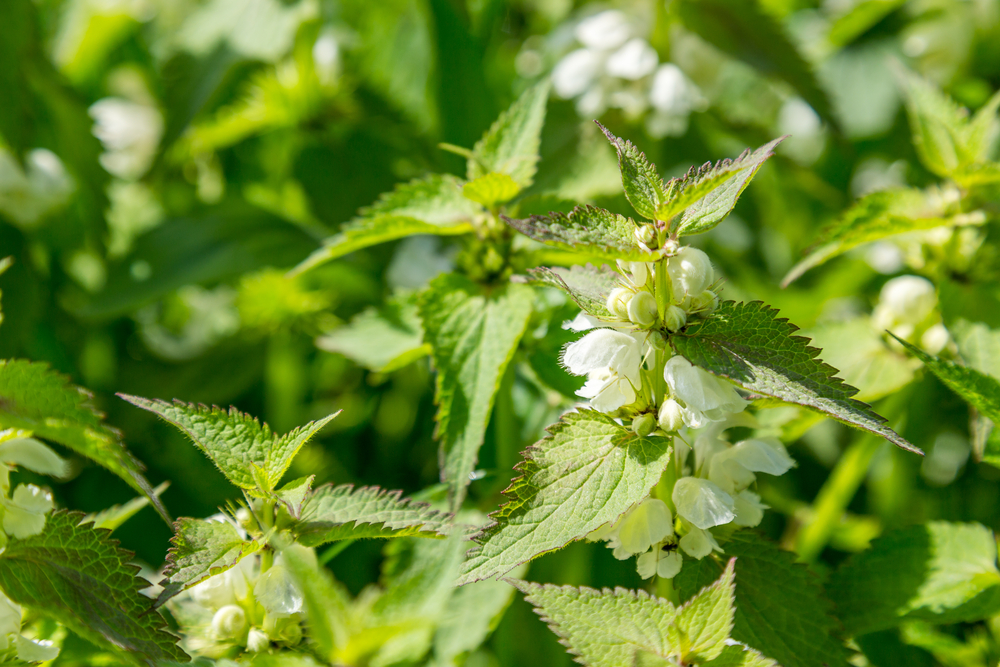
White dead nettle is a master of mimicry, often mistaken for the stinging nettle despite being harmless. This deception protects it from herbivores that avoid stinging nettles due to their painful defense mechanism. Unlike its lookalike, Lamium album doesn’t have stinging hairs but relies solely on its visual similarity to fool predators. The resemblance to stinging nettles extends to their structure, as both plants have similar leaf shapes and growth patterns. The key difference lies in their flowers, with the white dead nettle producing small white blooms. This harmless member of the mint family has also been a popular foraging plant due to its high vitamin A content. Its ability to thrive without needing a physical defense highlights the success of visual mimicry in the plant kingdom. Moreover, its attractive flowers still draw in pollinators, allowing it to continue thriving in various environments.
Milkweed (Asclepias spp.)
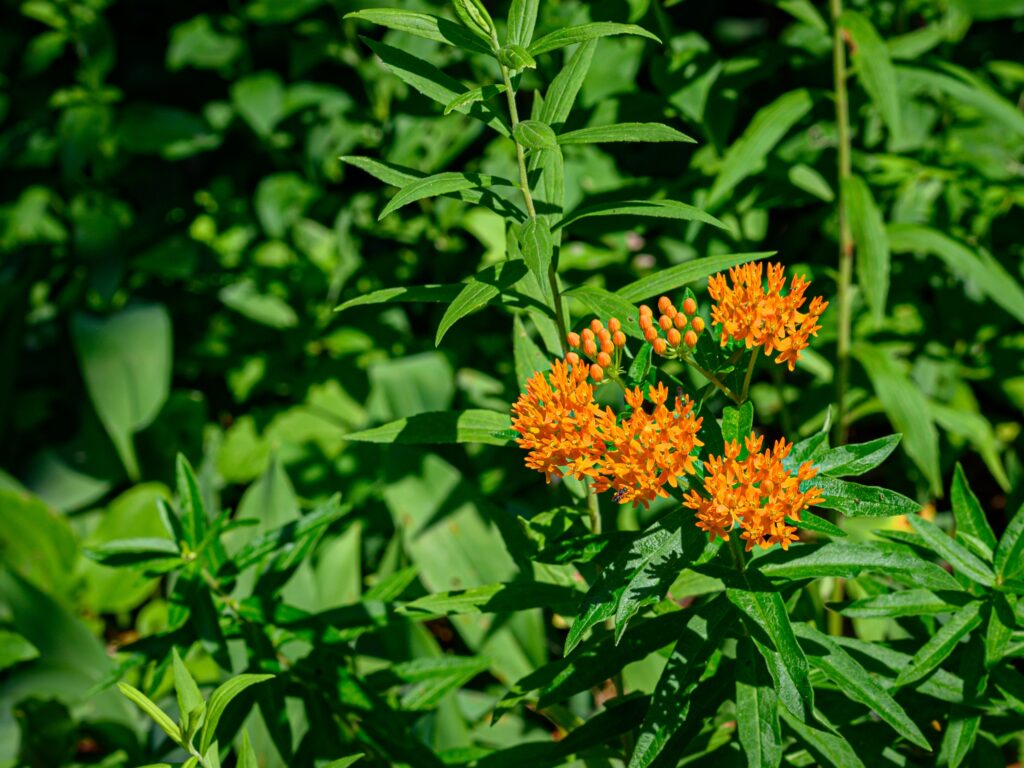
Milkweed defends itself through toxic compounds called cardenolides, which make it poisonous to most herbivores. These chemicals, found throughout the plant, particularly in its sap, interfere with the hearts of animals that consume it. While many animals avoid milkweed due to its toxicity, some have evolved to tolerate its defenses. Monarch butterflies, for example, feed on milkweed during their larval stage, storing the toxins in their bodies to make themselves poisonous to predators. This creates a two-tiered defense system where the plant protects itself from herbivores and provides a defense to insects that consume it. Its bright flowers also serve as a warning signal to potential predators, indicating its toxic nature. In addition, the sticky latex that oozes from the plant’s stems gums up the mouthparts of insects, further deterring them from feeding.
Pitcher Plant (Nepenthes spp.)
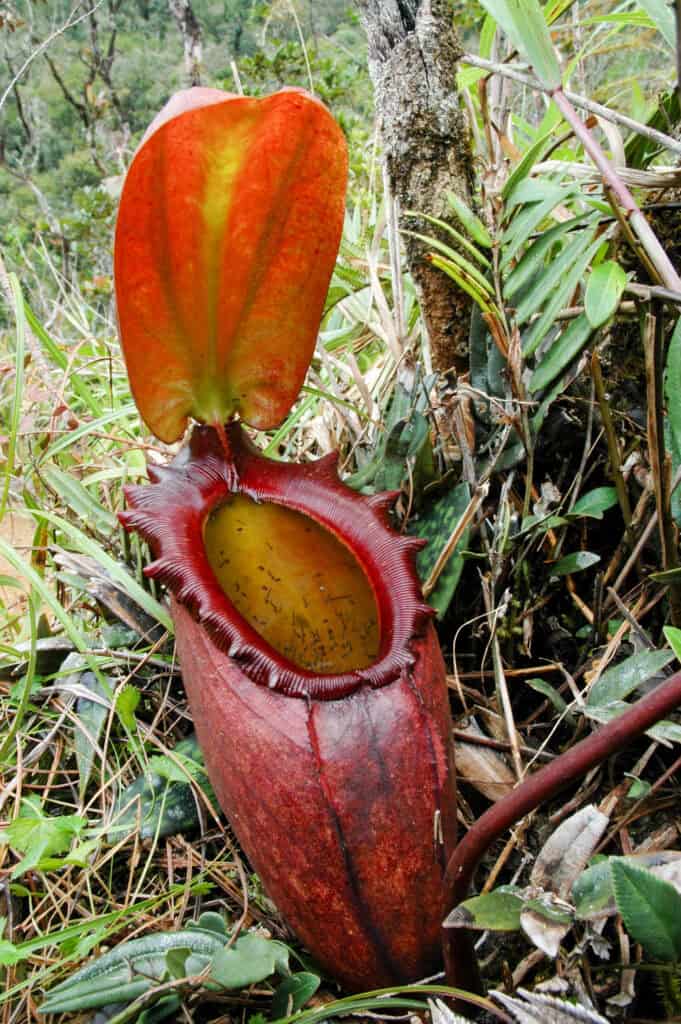
Pitcher plants have developed a carnivorous defense mechanism, luring insects into their trap-like leaves, where they are digested. Its leaves form deep, water-filled cavities that are slippery and difficult for insects to escape from. Once inside, the insects drown, and the plant secretes enzymes to break them down, absorbing the nutrients. This allows the plant to thrive in nutrient-poor soils where other plants struggle. The slippery inner walls of the pitcher, combined with downward-pointing hairs, prevent the trapped prey from climbing out. Nepenthes species are often found in tropical rainforests, where they compete with other plants for limited resources. The carnivorous nature of the pitcher plant provides it with a steady supply of nitrogen and other essential nutrients, enabling it to grow in otherwise inhospitable environments. Its ability to digest insects gives it a competitive edge over non-carnivorous plants.
Sundew (Drosera spp.)
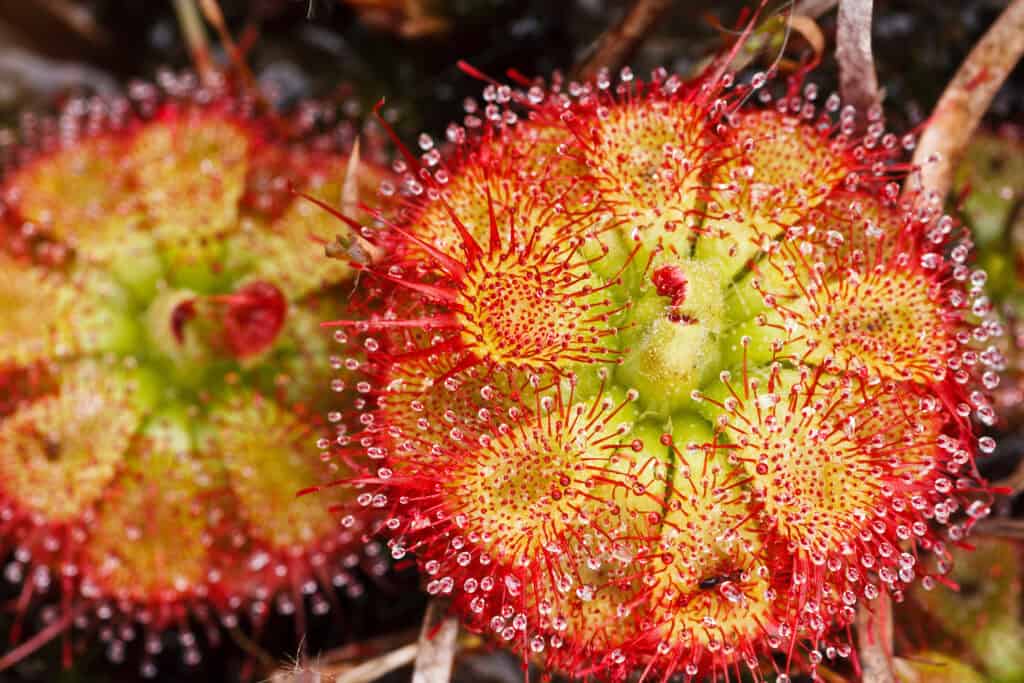
Sundews have evolved sticky, glandular hairs on their leaves to trap and digest insects, turning them into a source of nutrients. These hairs secrete a glue-like substance that captures insects when they land on the leaves, holding them in place. Once trapped, its leaves slowly curl around the prey, maximizing the contact with digestive enzymes. This process allows the plant to break down and absorb essential nutrients from its catch, especially nitrogen, which is often lacking in the poor soils where sundews grow. The bright, glistening droplets on the sundew’s hairs resemble nectar, luring unsuspecting insects into the trap. Its ability to capture and digest insects provides it with a crucial nutrient source that helps it thrive in nutrient-deficient environments. Furthermore, they are able to move their leaves in response to stimuli, increasing their effectiveness as carnivorous plants.
This article originally appeared on Rarest.org.
More from Rarest.org
13 Rare Flower Species That Bloom in Specific Microclimates
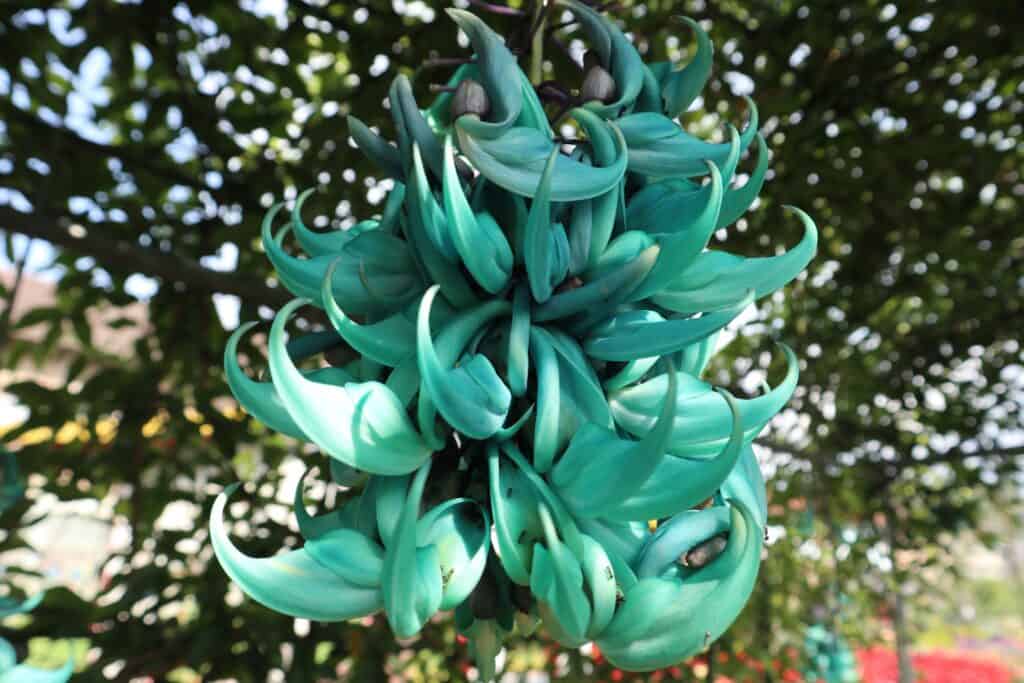
Some flowers are so rare that they can only bloom under very specific environmental conditions, known as microclimates. These delicate species rely on unique combinations of temperature, humidity, soil, and sunlight to survive and thrive. Read More.
The 13 Most Mythical Currencies in History

Throughout history, different civilizations have used a wide variety of materials and objects as currency, often reflecting their unique cultures and resources. From stones and shells to cocoa beans and metal tools, these currencies went beyond their practical value, symbolizing wealth, power, and status. Read More.
21 Mysterious Caves Around the World That Few Have Explored

The earth is home to countless natural wonders, and some of the most mysterious are hidden beneath its surface. These caves, often remote and difficult to access, have captivated explorers with their uncharted depths. Read More.
